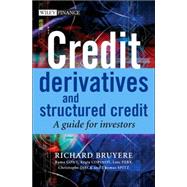
RAMA CONT is a research scientist at Centre de Mathématiques Appliques, Ecole Polytechnique (France) and founding partner of Finance Concepts. He is the author of several research articles in quantitative finance and co-author of Financial modelling with jump processes (CRC Press, 2003) and Produits drivs de crdit (Economica: 2004).
RGIS COPINOT is a Managing Director in Socite Gnrales Credit trading department specialist in non-investment grade credits. He has worked on derivatives products since 1992 in the London markets first in the field of Commodities Options (1992) later in Interest Rates Options (1994) and since 1998 in Credit Derivatives. Rgis Copinot is graduated from Ecole Centrale Paris. He is a co-author of Produits drivs de crdit (Economica: 2004).
LOC FERY is managing director in the Capital Markets division of Calyon. He is in charge of the global Structured Credit & CDO product-line, which includes correlation trading, as well as Cash and Synthetic CDO structuring. Loc Fery is graduated from HEC (Paris).
CHRISTOPHE JAECK joined Socit Gnrale credit derivatives department in 1998. In charge of structured operations on balance sheet management (synthetic CLOs) until 2001, he is now Head of synthetic CDOs activity development in Europe. Christophe Jaeck is a graduate from ENSAE.
THOMAS SPITZ began his career in Socit Gnrale as a credit derivatives trader. He joined Crdit Agricole Indosuez in 2001 as Head of Credit derivatives trading both on Europe and the United States. Since 2004, in Calyon, he is the Head of Trading and Risk Management team for the Structured Credit, Deivatives & CDO Group. Thomas Spitz is a graduate from ENSAE.
|
|||
|
|||
|
|||
|
|||
|
|||
|
|||
|
|||
|
|||
|
|||
|
|||
|
|||
|
|||
|
|||
|
|||
|
|||
|
|||
|
|||
|
|||
|
|||
|
|||
|
|||
|
|||
|
|||
|
|||
|
|||
|
|||
|
|||
|
|||
|
|||
|
|||
|
|||
|
|||
|
|||
|
|||
|
|||
|
|||
|
|||
|
|||
|
|||
|
|||
|
|||
|
|||
|
|||
|
|||
|
|||
|
|||
|
|||
|
|||
|
|||
|
|||
|
|||
|
|||
|
|||
|
|||
|
|||
|
|||
|
|||
|
|||
|
|||
|
|||
|
|||
|
|||
|
|||
|
|||
|
|||
|
|||
|
|||
|
|||
|
|||
|
|||
|
|||
|
|||
|
|||
|
|||
|
|||
|
|||
|
|||
|
|||
|
|||
|
|||
|
|||
|
|||
|
|||
|
|||
|
|||
|
|||
|
|||
|
|||
|
|||
|
|||
|
|||
|
|||
|
|||
|
|||
|
|||
|
|||
|
|||
|
|||
|
|||
|
|||
|
|||
|
|||
|
|||
|
The New copy of this book will include any supplemental materials advertised. Please check the title of the book to determine if it should include any access cards, study guides, lab manuals, CDs, etc.
The Used, Rental and eBook copies of this book are not guaranteed to include any supplemental materials. Typically, only the book itself is included. This is true even if the title states it includes any access cards, study guides, lab manuals, CDs, etc.